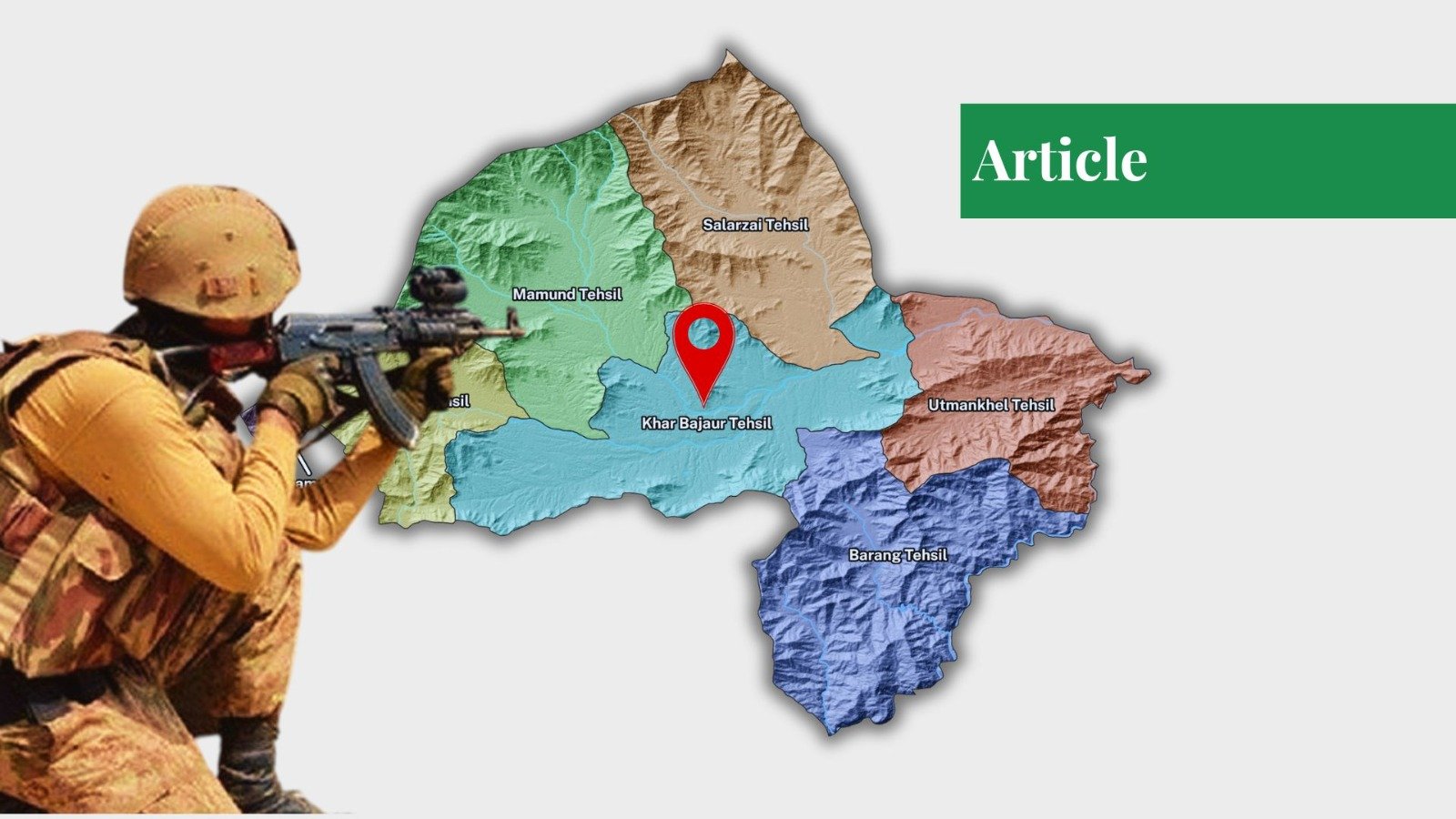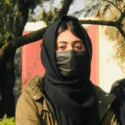After two decades of war against militancy in Pakistan’s tribal areas, specifically in the Bajaur district, the question is still: what truly defines victory in this brutal war? The terrain upon which they are battling is that of rugged mountains and intricate tribal fronts, a border where militants such as the Tehrik-i-Taliban Pakistan (TTP) have made themselves at home as they openly challenge the writ of Pakistan. Cross-firing and shelling between terrorists and security forces have left thousands of civilian refugees caught in the crossfire. With such enormous life and financial costs, what Pakistan has truly gained, and what must change?
Operation Sarbakaf was launched in the Lowi Mamund tehsil of Bajaur region on July 29, 2025. The military declared that it had come to eliminate the terrorist havens following a resurgence in Tehrik-i-Taliban Pakistan (TTP) insurgency activities. The military operation in Khyber Pakhtunkhwa involved the use of heavy artillery, helicopters, and sweeping curfews of 16 villages, thus practically paralyzing daily life for the local population.
However, it soon became clear that this was not going to be a short-term campaign. What was originally scheduled to be a three-day curfew was extended in the face of mounting battles and claimed more than two dozen villages and key roads for several months, displacing 100,000 civilians, according to relief agencies.
There were severe shortages of water, medicine, and security for the displaced families who crammed into camps in the Bajaur Sports Complex and constructed improvised shelters. The human cost has been terrible. For example, on August 13, two children and their mother were killed in a mortar strike, resulting in protests for transparency and justice.
Local jirgas and the provincial government asked for ceasefires and peace talks, emphasizing that although military strength was essential, it was not the way to restore peace. Despite these calls, the federal military command moved back to hardline tactics on the talks, which did not bear much fruit, as the discord between Islamabad and Peshawar continued to deepen. This policy rift makes the situation of fragile security even more difficult as it disoriented residents and sabotaged concerted counterinsurgency actions.
The number of casualties reflects the intensity of the conflict. In northwest Pakistan, more than 30 soldiers were killed between September 1 and 15. The deadliest battles took place between September 10-13, in which heavy firefights near the Afghan border, especially in Bajaur and the adjoining areas of South Waziristan, claimed at least 12 soldiers and killed over 35 militants in several engagements. These numbers demonstrate the region’s continued militant resistance’s fury and deadly nature. Though the Pakistan Army credited its troops with eliminating dozens of militants, the surge of violence shows the increased operational capabilities of insurgents. The porous Durand Line has been used by the TTP to capitalize on the Afghan territories, such as Kunar province, where it can regroup and make incursions.
Pakistan faces a paradox: it has an army that is well disciplined, is far renowned in its bravery and strategic prowess, yet it is having to grapple with an insurgency that is highly survivable and adaptive, and compounded by political division and regional rivalries.
In recent years, the bloodiest militant operations in Pakistan, such as the suicide bombing of a JUI-F rally in Bajaur, affiliates revealed that both sides of the conflict (the Pakistani and the Afghan Taliban) keep destabilizing the area. Displacement, collateral damage, local alienation, and militant resurgence are all outcomes that are prevalent due to military operations. The nearly 100,000 displaced civilians during Sarbakaf alone highlight the fact that counterterrorism is not a tactical or territorial concern, but a human security concern. The question then becomes more than a kind of military calculus: how shall we break this cycle?
The role of the political divisions in counterinsurgency is disproportionate. The focus of the federal military on kinetic operations, while the provincial government supports the idea of inclusion and dialogue, is indicative of an underlying tension of power and approach. Such fractures have the risk of stalling or even reversing gains. Without political unity, the state can hardly brandish a single story or agenda that can earn the trust and cooperation of local people, which is essential for lasting peace.
Furthermore, security efforts are made more difficult by extremist organizations along the Afghan border. The Kabul Taliban government has either been uncooperative or unable to check the activities of TTP, and it has exposed Pakistan to cross-border attacks. The regional aspect of the security dilemma in Pakistan is highlighted by the calls of the military authorities, who are urging Afghanistan to meet its responsibilities.
History shows that the lack of political inclusiveness and humanitarian consideration in counterinsurgency almost always yields no results. Past operations like Zarb-e-Azb and Radd-ul-Fasaad had only created temporary suppression of militants but did not fully dismantle their terror networks. This is not because military ineptitude exists, but the grievances of the marginalized tribal communities that have long been lived with cannot be solved by combat operations alone.
Thus, there is a dire need to be able to shift to a new paradigm, to cease the unilateral military approach and adopt a multi-dimensional strategy centered on political dialogue, local governance integration, rapid humanitarian response, and international diplomacy. Civilians should be placed at the center stage of the peace-building efforts. Rapidly reopening medical facilities, educational institutions, and economic possibilities after military operations helps boost public confidence in the government by addressing issues beyond security.
Government legitimacy will be further restored by open investigations into civilian casualties. Including the elders of the tribe and the community’s political leadership as part of the political process is a recognition of the traditionally central position of the elders in the local government and dispute resolution. Policies at the federal level need to be integrated with provincial realities in a streamlined manner to obtain community support. In turn, community support will be the core of success. Concerted support is needed in cross-border diplomacy, not only in Afghanistan but also in international partners, in severing militant safe havens and supply lines together.
Most importantly, the loss of Pakistan soldiers in firefights, roadside bombings, and ambushes demands not just remembrance, but bold strategic vision and political courage. Their courage compels us to confront harsh realities and look for innovative answers outside of costly, repeated offensives. By taking these actions collectively, Pakistan will have the opportunity to turn the battlefronts of Bajaur into pathways for peace and progress. There must be a resolute response to the killings of both military and civilians.
Will Pakistan rise to handle this challenge?
If you want to submit your articles and/or research papers, please visit the Submissions page.
To stay updated with the latest jobs, CSS news, internships, scholarships, and current affairs articles, join our Community Forum!
The views and opinions expressed in this article/paper are the author’s own and do not necessarily reflect the editorial position of Paradigm Shift.
Fiza Batool Bukhari is a 7th-semester undergraduate student of Defence and Strategic Studies at Quaid-i-Azam University, Islamabad. Her research focuses on regional
security dynamics, non-traditional security threats, including maritime smuggling and human security challenges, as well as the evolving nature of counterinsurgency strategies in Pakistan’s border regions.
She has also interned at the Ministry of Defence and the Associated Press of Pakistan, gaining practical experience in national security affairs and media analysis.



